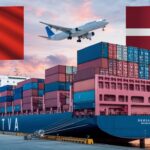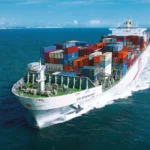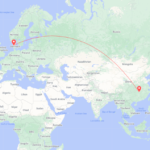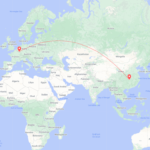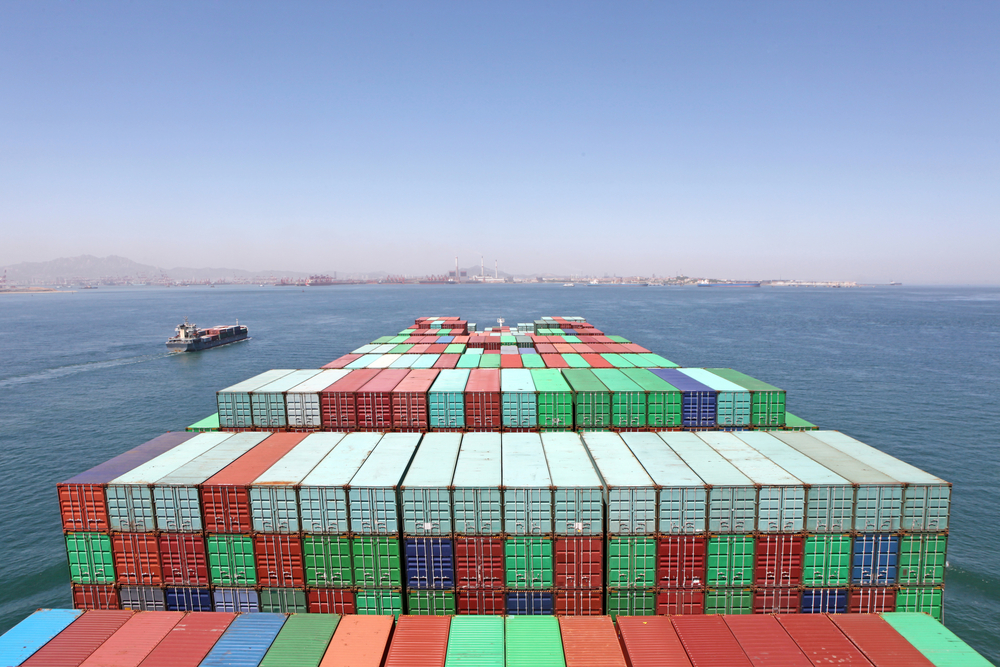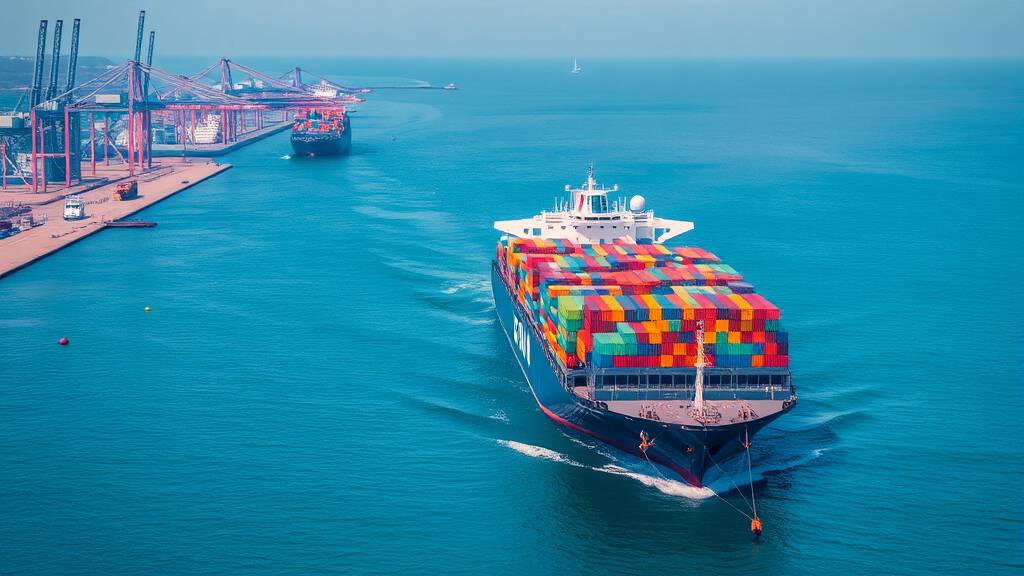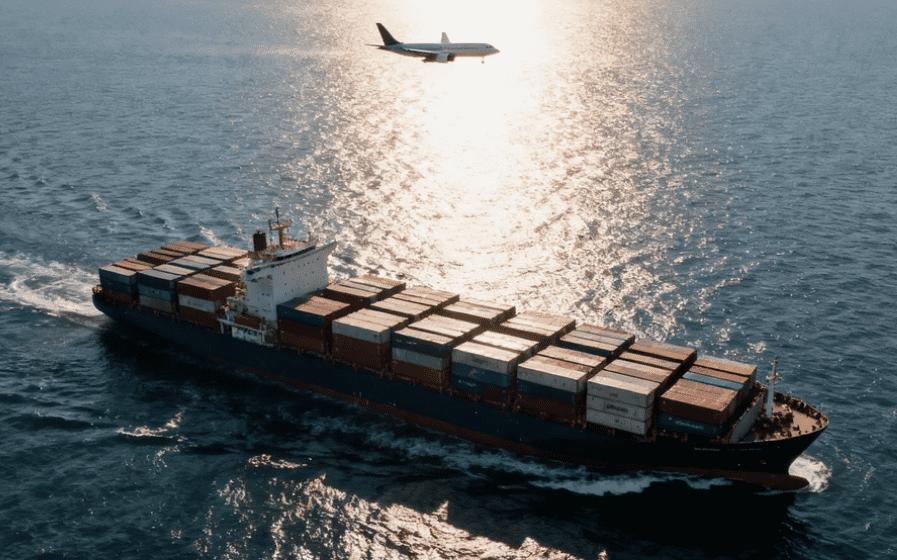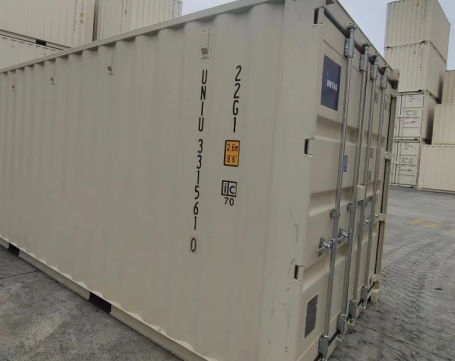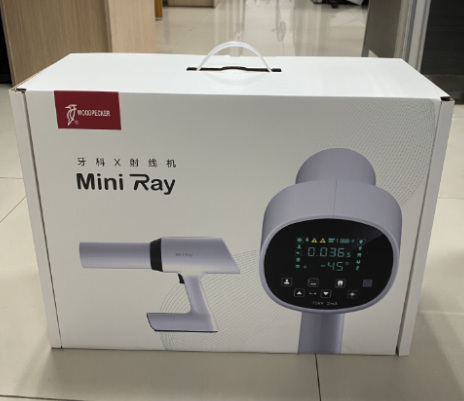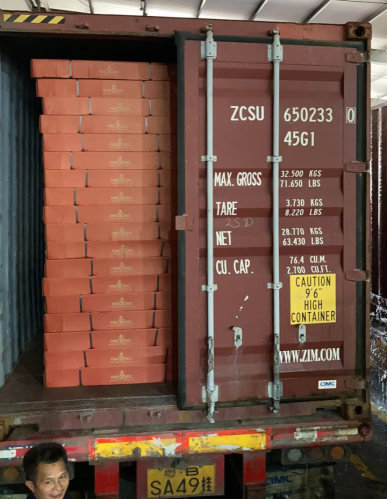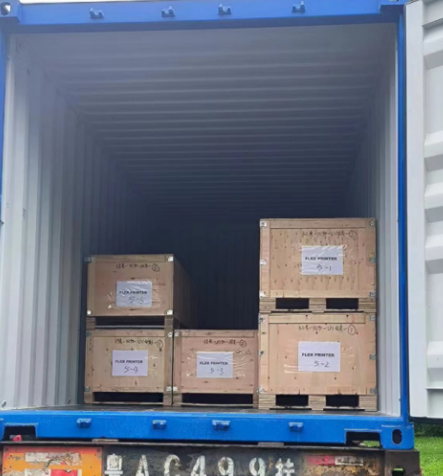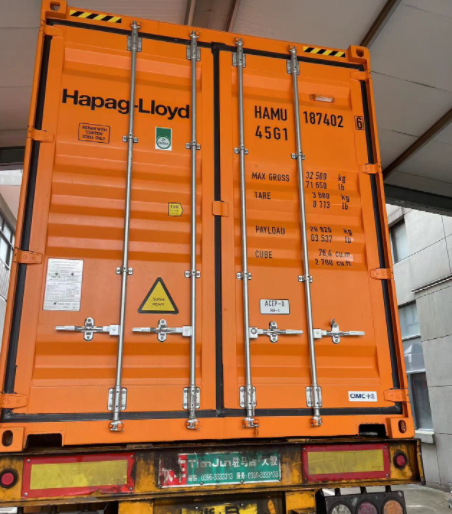Are you wondering how much is shipping from China to the US and what factors influence the final price? With so many variables—from shipping methods to customs duties—calculating your total shipping cost can be challenging. In this comprehensive guide, we’ll break down the key elements that impact pricing, compare popular freight options, reveal hidden fees, and share proven tips to help you save on your next China-to-US shipment. Let’s dive in!
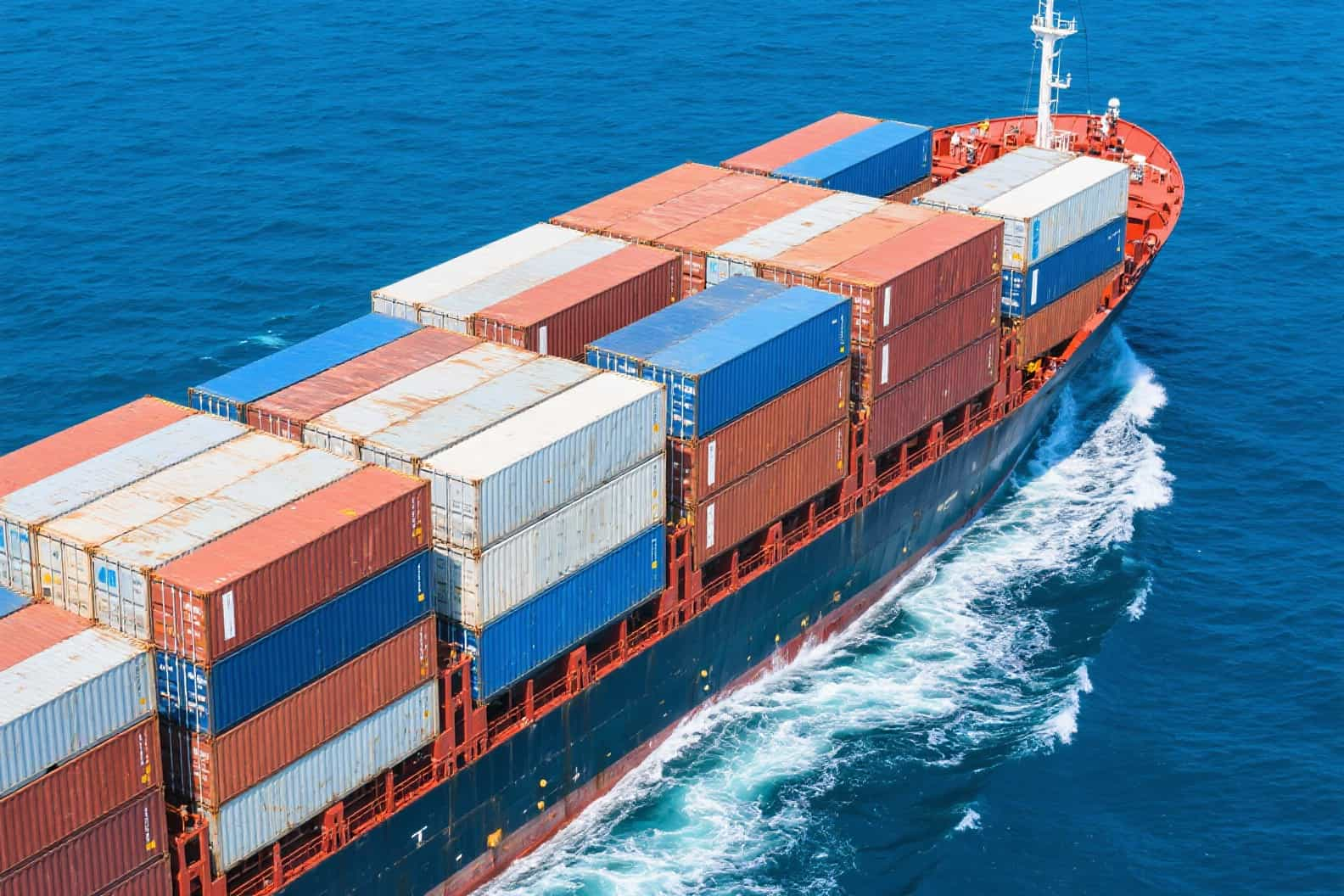
Factors Affecting Shipping Cost from China to US
Type of Goods and Cargo Volume
The type of goods you are shipping can greatly influence the overall shipping cost from China to the US. Items that are classified as hazardous, oversized, or perishable often require special handling, packaging, and transportation, which leads to higher charges. Additionally, the cargo volume—whether measured by gross weight or cubic meter—directly impacts the rate. Larger shipments often benefit from bulk discounts, while smaller loads may face higher per-unit costs, especially if they do not fill a container.
For example, shipping electronics generally costs less per unit of volume than shipping chemicals due to regulatory and handling requirements. Shipping 10 cubic meters of standard merchandise will have a different price structure than shipping the same amount of fragile or regulated goods.
Shipping Distance and Routes
Shipping distance between the origin port in China and the destination port in the US is another key factor. Shorter routes, such as from Shanghai to Los Angeles, typically cost less and take less time than long-haul routes like Shenzhen to New York. Furthermore, direct routes without transshipment (cargo transfers between vessels or modes) are usually more cost-effective and less prone to delays.
For a detailed overview of the main American entry points for goods, you may want to review the biggest ports in the US.
| Origin Port | Destination Port | Estimated Ocean Freight Cost (FCL, 40ft) | Average Transit Time |
|---|---|---|---|
| Shanghai | Los Angeles | $2,200 – $2,700 | 14-18 days |
| Shenzhen | New York | $3,500 – $4,200 | 28-35 days |
| Ningbo | Houston | $3,000 – $3,800 | 27-32 days |
Seasonal Fluctuations and Demand
Peak shipping seasons—such as the months leading up to Chinese New Year, the US holiday season, and back-to-school periods—see heightened demand for shipping space. During these periods, shipping rates from China to US can rise sharply—sometimes by 30% or more—due to limited capacity and high booking volumes. Planning shipments outside these peak windows can result in significant cost savings.
Customs Duties and Taxes
When goods arrive in the United States, importers are responsible for paying customs duties, taxes, and any applicable tariffs. The rates depend on product classification under the Harmonized System (HS) Code, product value, and trade agreements between China and the US. For example, certain electronics may be duty-free, while textiles or steel items may attract higher tariffs due to ongoing trade policies. Always consult with your shipping partner or a customs broker to avoid unexpected costs and delays.
Fuel Prices and Surcharges
Fluctuations in global fuel prices directly affect freight rates. Carriers frequently adjust bunker adjustment factors (BAF) for ocean freight and fuel surcharges for air freight, reflecting changes in oil markets. Additionally, other surcharges—such as congestion surcharges, security fees, or currency adjustment factors—may be added to the base shipping rate.
Main Shipping Methods from China to US
Ocean Freight: FCL vs. LCL
Ocean freight is the most common and cost-effective way to ship large volumes from China to the US. There are two main options:
FCL (Full Container Load):
You reserve and fill an entire container (usually 20ft or 40ft). FCL is ideal for bulk shipments and offers better security, faster transit times, and lower per-unit costs for sizeable loads.LCL (Less than Container Load):
Your goods share container space with other shippers’ cargo. LCL is suited for smaller shipments, but it can involve extra handling, longer consolidation times, and higher per-cubic-meter rates compared to FCL.
For importers comparing these two modes, our resource on LCL vs FCL Shipping: How to Choose the Right Option for Small Cargo provides actionable guidance.
| Shipping Method | Typical Use Case | Estimated Cost (Shanghai–LA, 2025) | Transit Time |
|---|---|---|---|
| FCL (40ft) | 15-25 CBM, full container | $2,200 – $2,700 | 14-18 days |
| LCL | 1-10 CBM, shared container | $80 – $150 per CBM | 15-22 days |
Air Freight Options
Air freight is best for high-value, urgent, or perishable goods. It is significantly faster than ocean freight, with typical transit times of 3-7 days between major airports such as Shanghai Pudong (PVG) and Los Angeles (LAX). However, air freight is costlier, with rates often ranging from $4 to $8 per kilogram depending on weight, volume, and service level (express vs. standard).
For more specific air shipping costs to the US West Coast, reference how much for air freight from China to Los Angeles.
| Route (Airport) | Weight Bracket | Estimated Cost (per kg, June 2025) | Transit Time |
|---|---|---|---|
| PVG-LAX | 100-300 kg | $5.00 – $6.50 | 3-5 days |
| PVG-JFK | 100-300 kg | $6.50 – $8.00 | 4-6 days |
(Source: The Loadstar)
Rail and Multimodal Solutions
While direct rail connections from China to the US do not exist, multimodal shipping is an alternative for some shippers. Goods can be moved by rail from inland Chinese cities (e.g., Chongqing, Zhengzhou) to European ports, and then onward by ocean freight across the Atlantic to the US. This can sometimes offer a balance between cost and speed, especially for routes from western or central China.
For those considering rail as part of a multimodal solution, our rail freight service page can provide more information on available routes and options.
Dantful International Logistics specializes in providing tailored solutions, including multimodal transport, combining rail, ocean, and even air freight as needed. This flexibility ensures that importers get the most suitable balance of cost, speed, and reliability when shipping from China to the United States.
Sea Freight Cost from China to US
Understanding the cost of sea freight from China to the US is essential for importers aiming to optimize their supply chain and ensure profitability. As of 2024, global shipping costs remain sensitive to economic, geopolitical, and logistics factors, including changes in customs regulations, fuel prices, and port congestion across major U.S. gateways like Los Angeles, Long Beach, and New York. Below, we detail the average rates for the two standard shipping container sizes—20ft and 40ft—from major Chinese ports to popular U.S. destinations.
Note: Actual rates can vary significantly based on the chosen incoterm (e.g., DDP, FOB, CIF), shipping route, seasonality, surcharges, and services like consolidated freight shipping. Always request a personalized quote from a reliable freight forwarder such as Dantful International Logistics, which offers highly professional, cost-effective, and one-stop international shipping solutions.
Cost of 20ft Container Shipping from China to US
A 20ft container (also known as a TEU—Twenty-foot Equivalent Unit) is ideal for smaller shipments or businesses with less-than-bulk cargo volumes. The price varies according to departure and arrival ports, but the following table provides a 2024 Q2 industry average:
| From (China Port) | To (US Port) | Transit Time (Days) | 20ft Container Cost (USD) |
|---|---|---|---|
| Shanghai | Los Angeles | 15–18 | $2,400–$3,200 |
| Shenzhen | New York | 28–33 | $3,100–$4,000 |
| Ningbo | Houston | 27–30 | $3,000–$3,900 |
| Qingdao | Miami | 32–40 | $3,200–$4,100 |
Data Reference: Container cost from China to USA, and actual 2025 industry shipping rates.
Cost of 40ft Container Shipping from China to US
A 40ft container (FEU—Forty-foot Equivalent Unit) is best for larger volumes, allowing greater economies of scale and a lower per-unit shipping cost. Here are the latest average rates for a 40ft container shipment:
| From (China Port) | To (US Port) | Transit Time (Days) | 40ft Container Cost (USD) |
|---|---|---|---|
| Shanghai | Los Angeles | 15–18 | $4,100–$5,400 |
| Shenzhen | New York | 28–33 | $5,700–$7,200 |
| Ningbo | Houston | 27–30 | $5,200–$6,100 |
| Qingdao | Miami | 32–40 | $5,900–$7,300 |
Data Reference: 40 ft container shipping cost from China to USA, container shipping costs from china to USA, and latest logistics market insights.
Important Tips:
- Rates can fluctuate weekly; always confirm the current rate before booking.
- Additional charges may apply for peak season, surcharges, or value-added services (such as door-to-door shipping and customs clearance).
- Consider partnering with Dantful International Logistics, known for transparency, high-quality service, and extensive experience in Shipping From China to USA.
Air Freight Cost from China to US per KG
For time-sensitive and high-value shipments, air freight is the fastest and most secure option between China and the US. Air freight rates are typically calculated by chargeable weight (actual or volumetric, whichever is higher), and may vary depending on the origin airport, destination, cargo type, weight break, and the season.
As of Q4 2025, air freight rates remain elevated compared to pre-pandemic levels due to infrastructure bottlenecks, fuel price volatility, and e-commerce demand. Here’s a reference for average economy and express air freight rates per kilogram:
| From (China Airport) | To (US Airport) | Transit Time | Economy Air (USD/kg) | Express Air (USD/kg) |
|---|---|---|---|---|
| Shanghai (PVG) | Los Angeles (LAX) | 3–5 days | $4.50–$6.20 | $7.00–$9.50 |
| Shenzhen (SZX) | Chicago (ORD) | 4–7 days | $4.80–$6.70 | $7.40–$10.20 |
| Guangzhou (CAN) | New York (JFK) | 5–9 days | $4.90–$7.00 | $7.70–$10.80 |
| Beijing (PEK) | Miami (MIA) | 5–9 days | $5.00–$7.20 | $8.00–$11.40 |
Data Reference: air freight from china to usa, how much for air freight from china to los angeles, and latest logistics market insights.
Important Tips:
Key Notes:
Customs clearance, pickup/delivery, and insurance may incur additional charges. For full details, consult a specialist at Dantful.ontainer Index and the US Federal Maritime Commission.
Final costs depend on shipment volume, destination airport, season, and service speed.
Dantful International Logistics offers flexible solutions from economy to urgent express, as well as consolidated air freight services.
Customs Duties, Taxes, and Regulations in US
1. Customs Duties
- Base Additional Duty: Effective May 14, 2025, an additional 10% ad valorem duty is imposed on all goods imported from China (including Hong Kong and Macao), except for exempted categories . This rate replaces the previously elevated “reciprocal tariffs” (up to 125%) following the U.S.-China Geneva talks .
- Low-Value Shipment Duty: Shipments valued at or under $800 arriving via international mail from China/Hong Kong are subject to either 54% ad valorem duty or a $100 flat rate per package, with the “de minimis” exemption revoked .
- Section 301 Tariff Exclusions: 352 Chinese products (e.g., medical devices, solar manufacturing equipment) retain tariff exemptions extended through November 29, 2025 .
- Specific Product Tariffs: Beer imported from China is taxed an additional 25%, with empty aluminum cans included in aluminum-derived product tariff lists .
2. Taxes & Fees
- Merchandise Processing Fee (MPF): Typically 0.3464% of the cargo’s dutiable value, with a minimum of $27.23 and maximum of $528.33 per entry.
- Harbor Maintenance Fee (HMF): 0.125% of the cargo’s value (applies to ocean shipments only).
- Excise Taxes: Applicable to specific goods like alcohol, tobacco, and certain electronics, calculated based on product type and quantity.
3. Key Regulations
- Origin Rules: Goods must be clearly marked with “Made in China”; Hong Kong/Macao-origin goods are treated as Chinese products per Executive Order 13936 .
- Agency Oversight:
- FDA: Food, pharmaceuticals, and eyewear require compliance (e.g., Drop Ball Test certification for lenses) .
- FCC: Radio frequency devices need Form 740 to declare compliance with U.S. standards .
- CPSC: Imported consumer goods under mandatory safety standards will require electronic filing (eFiling) of compliance certificates starting 18 months after the 2025 rule announcement .
- Supply Chain Security: Participation in C-TPAT (Customs-Trade Partnership Against Terrorism) is recommended for faster clearance .
US Customs Clearance & Documents Checklist
1. Mandatory Basic Documents
- Commercial Invoice: Includes importer/exporter details, product description (brand, material, model), quantity, unit price, total value, trade terms (e.g., FOB/CIF), and origin declaration .
- Packing List: Details net/gross weight, volume, and packaging specifications for each carton, with matching 唛头 .
- Bill of Lading (B/L)/Air Waybill (AWB): Transport contract specifying consignee, ports of origin/destination, and container numbers .
- Customs Bond: Continuous bond (for frequent importers) or single-entry bond (10-15% of cargo value, minimum $50) as duty payment guarantee .
- Entry Documents: CBP Form 7501 (Entry Summary) for duty calculation and Form 3461 (Entry/Immediate Delivery) for pre-arrival declaration .
2. Compliance & Specialized Documents
- Certificate of Origin: Required for tariff classification; excludes goods eligible for Section 301 exemptions .
- Regulatory Certifications:
- Wood products: ISPM 15 fumigation certificate .
- Electronics: FCC Form 740 and RoHS compliance statement .
- Medical devices: FDA approval and radiation declaration (Form 2877 if applicable) .
- Textiles: Fabric detail sheet and CPSIA compliance certificate .
- Importer Identification: IRS Tax ID (EIN) or CBP-assigned number; use Form 5106 if EIN/SSN is unavailable .
3. Special Scenario Additions
- Temporary Imports (e.g., exhibition samples): ATA Carnet or temporary import bond .
- Antiques/Artwork: Antique declaration (for items ≥100 years old) or artwork declaration with artist name and production date .
- Used Equipment: Maintenance records, service life documentation, and sanitization certificates .
4. Filing Requirements
- All documents must be submitted electronically via CBP’s ACE (Automated Commercial Environment) system .
- Pre-arrival declare (before cargo departs China) is recommended to shorten post-arrival clearance time .
READ MORE:
- Shipping From China to the USA
- Shipping From China TO Canada
- Shipping From China TO Mexico
- Shipping From China to Panama
- Shipping From China to Costa Rica
- Shipping From China to Brazil
- Shipping From China TO Colombia
- Shipping From China to Jamaica
- Shipping From China to Venezuela
- Shipping From China to Argentina
Hidden Costs & How to Avoid Them
Common Unexpected Fees (Peak Season, Storage, Customs)
Importers often encounter hidden or unexpected fees, including:
- Peak Season Surcharges: Imposed by carriers during high demand (August–November).
- Demurrage and Detention: Charges for containers kept at port or outside too long.
- Storage Fees: Warehousing fees when goods are not picked up promptly.
- Customs Inspection Fees: Costs incurred if your cargo is selected for inspection.
- Documentation Errors: Additional costs from incorrect paperwork or late submissions.
How to Identify Potential Extra Charges
To prevent surprises, always review your freight quote carefully. Ask your freight forwarder to clarify:
- Which costs are included/excluded (e.g., DAP, DDP, FOB, CIF terms)
- Port congestion surcharges or General Rate Increases (GRI)
- Fuel and security surcharges
- Handling and delivery fees at destination
A transparent provider like Dantful International Logistics will provide a detailed breakdown of all potential costs upfront.
Tips for Transparent Shipping Quotes
- Request An Itemized Quote: Ensure all charges are listed, from origin to destination.
- Ask About Surcharges: Inquire specifically about peak season, fuel, and port fees.
- Confirm Incoterms: Understand which costs you are responsible for under your chosen trade term.
- Inquire About Customs Clearance: Some quotes exclude US customs brokerage—verify if this is included.
- Choose Experienced Forwarders: Work with reputable providers like Dantful International Logistics for clear, reliable quotes and end-to-end service.
Dantful International Logistics is a highly professional, cost-effective, and high-quality one-stop international logistics service provider for global traders. We offer a full range of services including Ocean Freight, Air Freight, Rail Freight, Road Freight, Amazon FBA, Warehouse, Customs Clearance, Insurance, Door to Door, OOG Freight, Consolidated Freight, and Breakbulk Freight. Our transparent pricing, experienced team, and global network ensure that your shipments from China to the US are managed efficiently, cost-effectively, and with peace of mind.
How to Reduce Shipping Costs When Shipping from China to US
Shipping goods from China to the US can be expensive, especially with fluctuating rates and hidden fees. However, there are several strategies to help importers minimize costs without compromising efficiency or reliability. Below, we detail proven methods for reducing your shipping expenses, while ensuring a smooth logistics process.
Consolidating Shipments
Consolidating shipments involves combining multiple smaller consignments into one larger shipment. This is especially effective for importers who source products from various suppliers in China or have multiple small orders.
For businesses shipping smaller loads, our consolidated freight shipping solutions maximize cost savings and efficiency.
Advantages of shipment consolidation:
- Lower Per-Unit Shipping Cost: Freight rates are typically lower per cubic meter or per kilogram for larger shipments.
- Reduced Handling Fees: Fewer individual shipments mean lower documentation and handling costs.
- Streamlined Customs Clearance: A single consolidated shipment can make customs procedures faster and more cost-effective.
How Dantful International Logistics helps:
We offer professional consolidated freight services, enabling our clients to combine goods from multiple suppliers, reducing overall costs. Our team coordinates with each supplier, manages pickup, and handles all paperwork, ensuring a seamless process.
Negotiating with Freight Forwarders
Establishing partnerships and negotiating rates with reputable freight forwarders can yield significant savings, especially for regular shipments.
Negotiation tips:
- Volume Discounts: Regular, high-volume shippers can often negotiate preferential rates.
- Long-Term Contracts: Committing to a long-term agreement may secure lower rates.
- Transparent Pricing: Request detailed quotes that include all possible charges to avoid surprises.
Choosing the Most Efficient Shipping Route
Selecting the optimal shipping route is crucial for balancing speed, reliability, and cost.
For general reference on the most common sea lanes, our page on shipping routes from China to USA provides an overview of key transit corridors and their implications for both cost and time.
Key considerations:
- Direct vs. Transshipment Routes: Direct routes usually cost more but are faster and less prone to delays, while transshipment routes can save money but may add time and risk.
- Port Selection: Shipping to major ports like Los Angeles, Long Beach, or New York can be cheaper and faster due to higher service frequency.
Example Table: Estimated Transit Times and Costs (as of Q1 2025)
| Origin Port | US Destination Port | Ocean FCL (USD/40’)* | Transit Time (Days) |
|---|---|---|---|
| Shanghai | Los Angeles | $2,200 – $2,800 | 15 – 20 |
| Shenzhen | New York | $4,000 – $5,200 | 30 – 35 |
| Ningbo | Houston | $3,800 – $4,600 | 27 – 32 |
Dantful’s solution:
We analyze multiple routes and carriers to offer the best balance between speed and cost, customized to your shipping needs.
Planning Shipments Around Peak Seasons
Freight rates from China to the US can rise sharply during peak seasons, such as before the Chinese New Year and the US holiday season.
Tips for planning:
- Avoid Peak Times: Ship during off-peak seasons when rates are lower.
- Forecast Demand: Plan inventory needs ahead of time to avoid last-minute, expensive shipments.
- Book Early: Reserve space with carriers in advance to lock in better rates.
Dantful’s advantage:
We provide regular updates on market trends and peak season forecasts, helping clients plan ahead and minimize costs.
Why Choose Dantful International Logistics for Shipping from China to US
When it comes to shipping from China to the US, selecting the right logistics partner is crucial. Dantful International Logistics stands out as a leading freight forwarder offering tailored, reliable, and cost-efficient solutions for global traders.
Our Competitive Advantages and Services
- Comprehensive Service Portfolio:
We provide ocean freight (FCL & LCL), air freight, rail freight, road freight, Amazon FBA, warehouse, customs clearance, insurance, door-to-door, OOG freight, consolidated freight, and breakbulk freight services. - Cost-Effective Solutions:
Our strong relationships with major carriers and airlines ensure competitive pricing and space availability, even during peak seasons. - Professional Expertise:
With years of experience in global trade logistics, our team understands the complexities of international shipping and regulations.
Reliable Customer Support and Tracking
- 24/7 Customer Service:
Our multilingual team is available around the clock to answer your questions and address concerns. - Real-Time Shipment Tracking:
Clients receive regular updates and can track shipments at every stage, ensuring full transparency and peace of mind. - Personalized Support:
Dedicated account managers provide tailored consulting for each client, enhancing communication and problem-solving.
Customized Shipping Solutions for US Importers
- Tailored Logistics Plans:
We assess each client’s specific requirements—cargo type, volume, destination, urgency—and design the most efficient shipping plan. - Regulatory Compliance:
Our customs professionals ensure compliance with both Chinese export regulations and US import requirements, reducing the risk of delays or fines. - Value-Added Services:
From cargo insurance to warehouse management and last-mile delivery, we provide end-to-end solutions for US importers.
Choosing Dantful International Logistics means partnering with a trusted, experienced, and innovative logistics provider—committed to your business success.
FAQs
Q1: How to get cheaper shipping from China to the USA?
A: Choose sea freight or consolidated freight shipping for bulk goods, compare shipping agents, book in advance, or work with Dantful International Logistics for cost-effective solutions.
Q2: Do I have to pay customs for a package from China to the US?
A: Yes, most shipments are subject to US customs duties, taxes, and processing fees; duty-free treatment for packages ≤ $800 will be suspended from August 29, 2025.
Q3: How much is shipping per kg from China?
A: Air freight from China to USA typically ranges from $4.50 to $7.20 per kg as of 2024, depending on the route and service level.
Q4: What is the average shipping cost from China to the US?
A: Ocean freight for a standard 40ft container averages $4,000–$7,000; air freight is approximately $5–$7/kg.
Q5: How long does it take to ship from China to USA?
A: By sea, transit is usually 15–35 days; air freight takes 3–7 days; express services can be even faster.
Q6: How are shipping costs calculated?
A: Charges depend on mode (sea, air), weight or volume, origin/destination, and fuel, plus any surcharges or value-added services.
Q7: How much is the duty from China to the USA?
A: Duties vary by product; most range from 0%–20%, but Section 301 tariffs can add 25%–50% for certain Chinese goods.
Q8: How to import from China with low shipping cost?
A: Consolidate shipments, select slower transit, use more economical ports, and partner with Dantful International Logistics for volume discounts and optimal routing.
Q9: How much is shipping from China to US on average?
A: Ocean freight (FCL) from major ports in China to the US West Coast ranges from $2,200 to $2,800 per 40’ container (as of Q1 2025). Air freight starts from $6.50 per kg, depending on volume, season, and route. Rates fluctuate due to market demand and fuel costs. For updated quotes, contact Dantful.
Q10: What is the fastest way to ship from China to the US?
A: Air freight is the fastest method, with transit times as short as 3–7 days, but it is significantly more expensive than ocean freight. For more details, visit our air freight from China to USA page.
Q11: Does Dantful handle customs clearance and delivery to my door in the US?
A: Absolutely. We offer customs clearance and door-to-door delivery services to ensure a seamless logistics experience.
Q12: Can I ship small parcels economically from China to the US?
A: Yes, consolidated freight services allow smaller shipments to be grouped, reducing costs and simplifying customs clearance.
Q13: How can I track my shipment?
A: Dantful International Logistics offers real-time tracking and proactive updates for all shipping modes.

Young Chiu is a seasoned logistics expert with over 15 years of experience in international freight forwarding and supply chain management. As CEO of Dantful International Logistics, Young is dedicated to providing valuable insights and practical advice to businesses navigating the complexities of global shipping.





